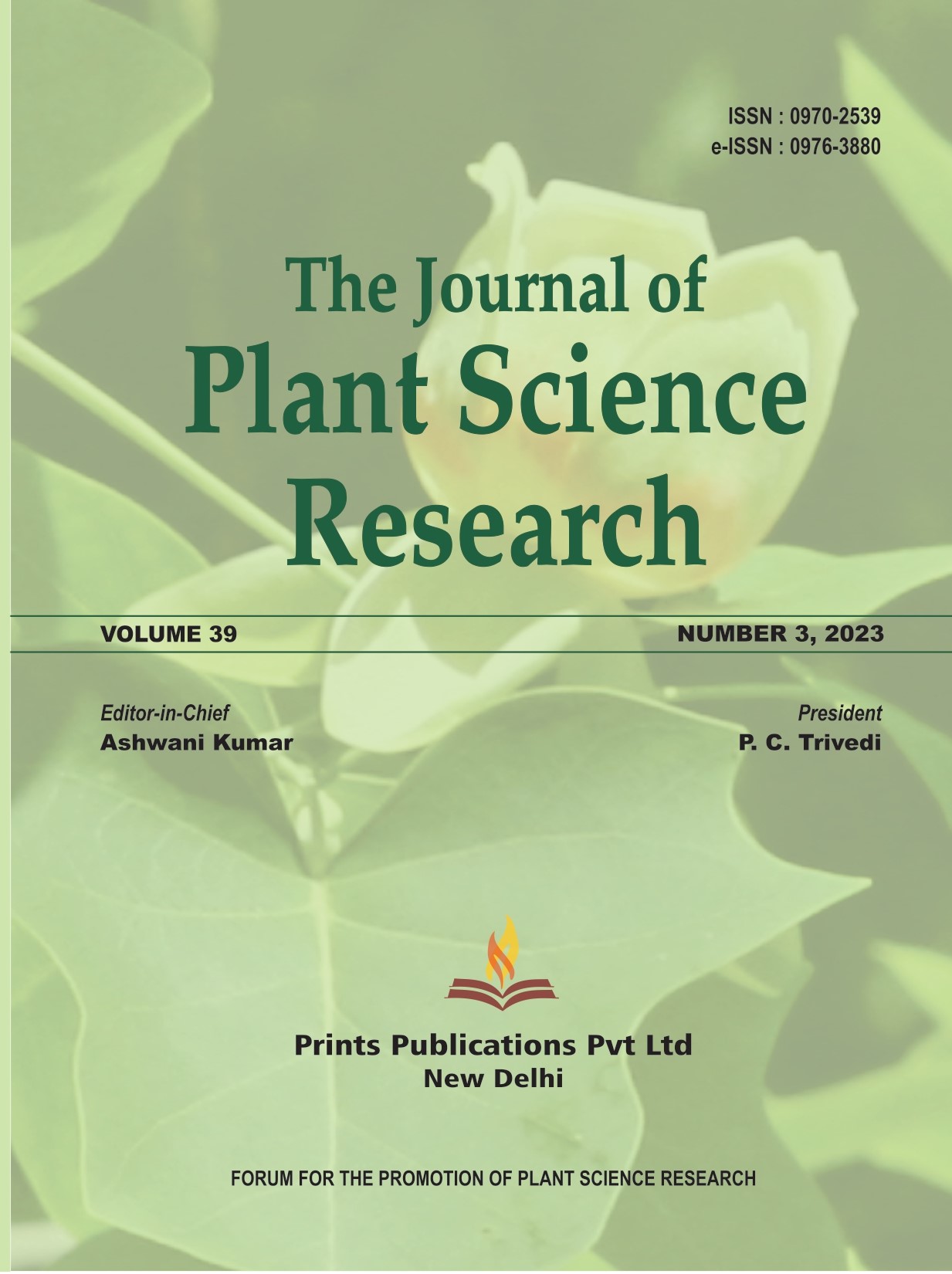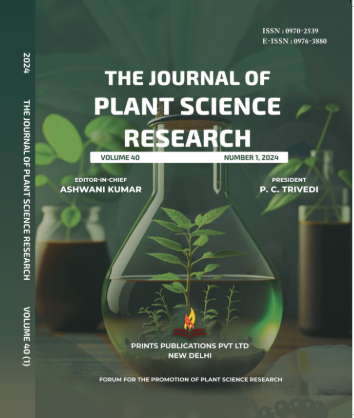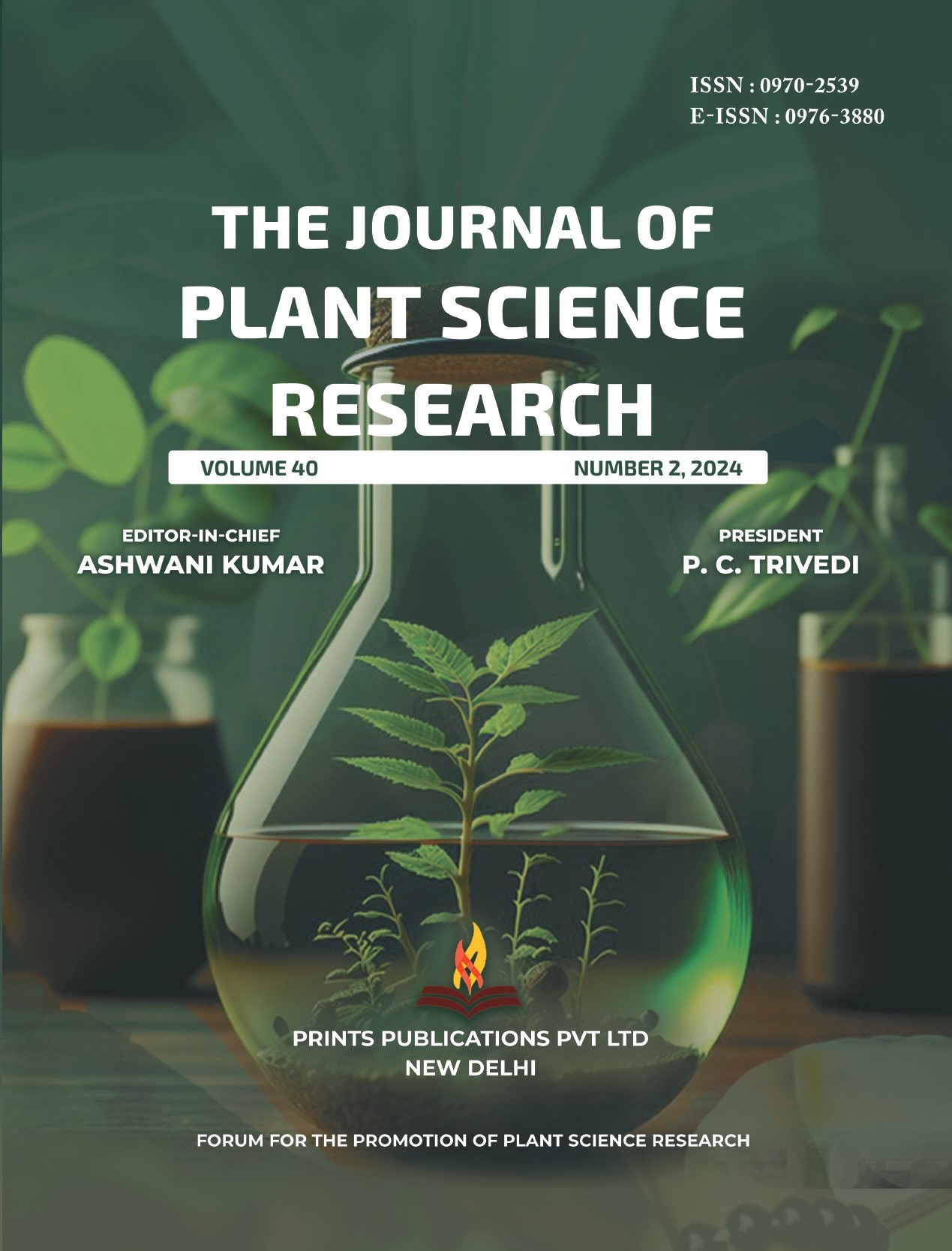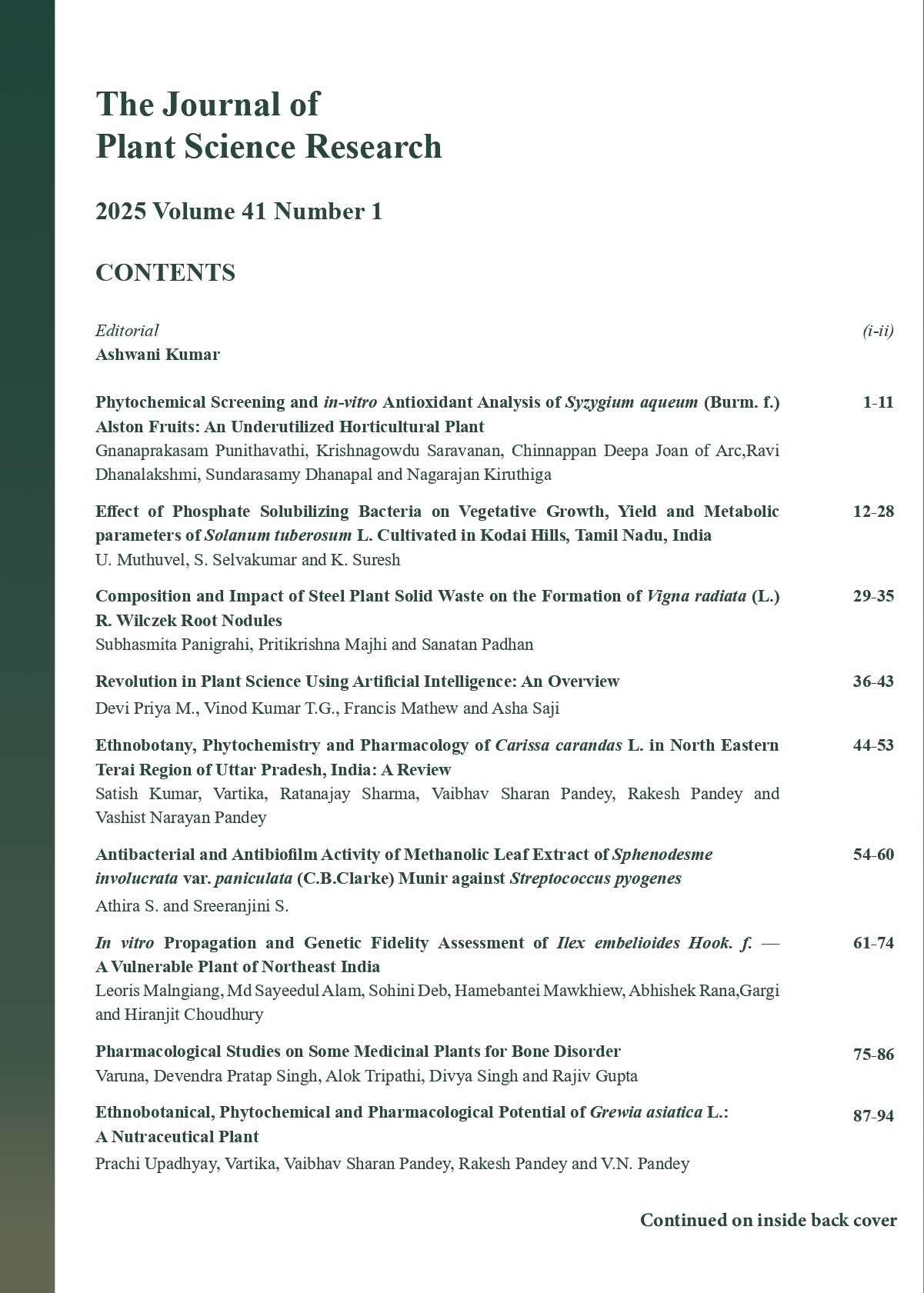The Journal of Plant Science Research - A UGC Care-Listed Journal
Published in Association with Forum For the Promotion of Plant Science Research
Current Volume: 41 (2025 )
ISSN: 0970-2539
e-ISSN: 0976-3880
Periodicity: Tri-annual
Month(s) of Publication: April, August & December
Subject: Botany
DOI: 10.32381/JPSR
Online Access is Free for Life Member
Assessing Heavy Metal Accumulation Capacities of Mosses: A Comparative Analysis with Focus on Cadmium in Urban & Natural Areas of Five different Sites of India
By : Kumar Shantanu, Sanavar Soham, P.L. Uniyal, Arunjit Mayanglambam, Meenakshi Sharma
Page No: 181-191
Abstract
Bryophytes exhibit notable efficacy in biomonitoring to assess the levels and discern the origins of heavy metal pollution. Their exceptional ability to accumulate substantial quantities of heavy metals surpasses that of other taxonomic groups. Periodic chemical analyses of moss specimens can prove highly advantageous in elucidating the temporal trends in pollution. The current research focuses on examining the accumulation of the heavy metal cadmium in both mosses and their respective supporting substrates across five distinct locations in India, namely Srinagar (Garhwal) (site 1), Bhawali (site 2), Chakrata (site 3), Shimla (site 4), and Munnar (site 5). Statistical analysis revealed that the concentration of heavy metals in plant samples and their supporting substrates at the Bhawali site was significantly higher than in the other four sites. The Cd concentration recorded in plant sample and their substratum was 42.606 and 297.506 μg/g, respectively in Entodon prorepens collected from Bhawali. The plant samples and substratum exhibited the lowest cadmium (Cd) concentrations in Trachypodopsis serrulata (0.0096 μg/g in the plant sample and 0.0196 μg/g in the substratum) and Timmiella anomala (0.0046 μg/g in the plant sample) from Chakrata, Pogonatum microstomum (0.0096 μg/g in the plant sample and 0.0216 μg/g in the substratum) and Campylopus latinervis (0.0096 μg/g in the plant sample and 0.0176 μg/g in the substratum) from Shimla, and Campylopus subfragilis (0.0096 μg/g in the plant sample and 0.0186 μg/g in the substratum) from Munnar. The present study suggests that Entodon prorepens can be regarded as a species with tolerance capabilities, demonstrating a notable capacity to accumulate the heavy metal cadmium in its gametophore.
Authors :
Kumar Shantanu : Associate Professor, Department of Botany, Deshbandhu College, University of Delhi, Delhi, India.
Sanavar Soham : Associate Professor, Department of Botany, Kalindi College, University of Delhi, Delhi, India.
P.L. Uniyal : Senior Professor, Department of Botany, University of Delhi, Delhi, India.
Arunjit Mayanglambam : Associate Professor, Department of Botany, Kalindi College, University of Delhi, Delhi, India.
Meenakshi Sharma : Assistant Professor, Department of Botany, Daulat Ram College, University of Delhi, Delhi, India.
DOI: https://doi.org/10.32381/JPSR.2025.41.01.18






